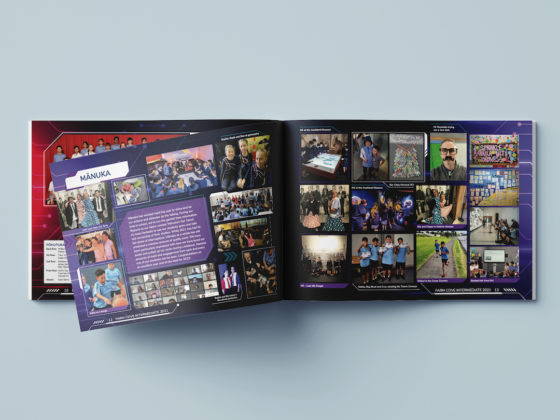Did you know that according to empirical research, we overestimate our own reading comprehension when we read on screen compared to paper? Anne Mangen, Chair of the Action, working at the Reading Centre at the University of Stavanger, tells us that we read faster on a screen and consequently understand less from a screen. This is handy advice when it comes to proofing your yearbook copy.
While captivating images and alluring graphic design are key to a successful yearbook, the written copy needs to be equally effective. Yearbooks are a time capsule of all the wonderful events and moments in the school year, and the text elements need to support the visuals in creating these memories.
Read All About It
A strong page title or heading is a good place to start. It tells the reader immediately what this page is about. You can use special fonts in your titles for effect but be wary of introducing too many different styles through the yearbook. Try a short headline for impact, followed by a sub-heading that provides more detail.
Keep Active
Writing in the active voice will make your content more readable and energetic. Direct quotes and comments from students and teachers also bring a sense of immediacy to the writing, as though the activity or event has just taken place.
Short & Sweet
Be wary of putting in too much content. Yearbook text should be short and concise, with simple paragraphs and sub-headings that guide the reader and explain each section. Keeping the text in short, tight blocks means more ‘white space’ and a more pleasing layout.
Outsource
Creating the written content is a big task, and it needs to be shared amongst staff and students as much as possible. School newsletters are a great, ready-made resource for information. Ultimately though, it comes down to one person who will do the copy-editing. It is their job to:
- Improve the overall style and consistency of the text
- Check spelling and grammar
- Condense/edit content as required
Proofreading is often best done by a skilled person — ideally, someone not involved in the content creation. This allows them to approach the text without any preconceptions.
Check The Facts
Finally, it is important to remember that yearbooks are a historical document, so it is crucial that names, dates and other details are correct.
Source: https://phys.org/news/2017-09-differently-paper-screen.html



